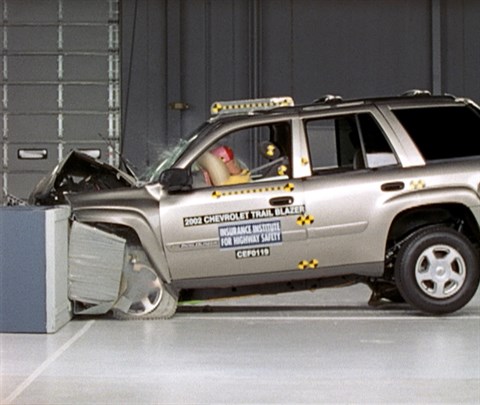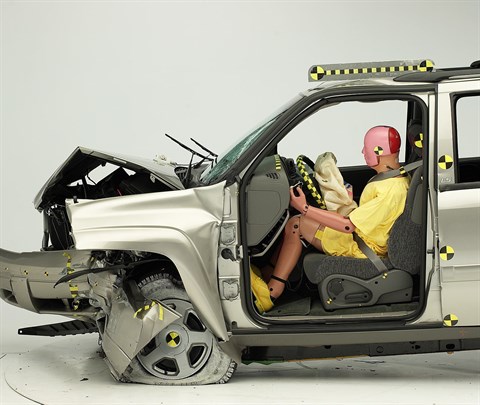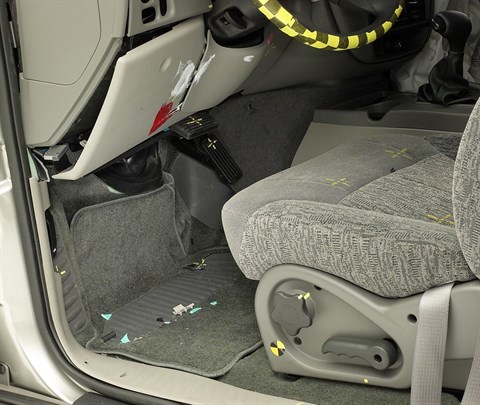Moderate overlap front: original test
Rating applies to 2002-04 models
Tested vehicle: 2002 Chevrolet TrailBlazer LS 4-door 4wd
The Chevrolet TrailBlazer was introduced in the 2002 model year as a larger, heavier replacement for the Blazer, which remained in production through the 2004 model year. Similarly, the GMC Envoy and Oldsmobile Bravada were redesigned for 2002, replacing entirely their earlier, smaller versions.
Structural, seat belt, and frontal airbag changes were made beginning with 2005 models to improve occupant protection in frontal crashes. Therefore, the frontal offset ratings for 2002-04 models do not carry over to 2005 and later models.
| Evaluation criteria | Rating |
|---|---|
| Overall evaluation | |
| Structure and safety cage | |
| Driver injury measures | |
| Head/neck | |
| Chest | |
| Leg/foot, left | |
| Leg/foot, right | |
| Driver restraints and dummy kinematics Dummy movement was reasonably well controlled. During rebound, the dummy's head extended part way out the open window and hit the B-pillar. | |

Action shot taken during the frontal offset crash test.

The dummy's position in relation to the steering wheel and instrument panel after the crash test indicates that the driver's survival space was maintained reasonably well.

Smeared greasepaint indicates where the dummy's head hit the B-pillar and window frame, indicating the possibility of head injury.

Intrusion into the driver's footwell area contributed to the likelihood of right lower leg injuries.
Head restraints & seats
Seat type: All seats
| Overall evaluation | |
|---|---|
| Dynamic rating | |
| Seat/head restraint geometry |
About the head restraint & seat test
Currently, IIHS tests apply only to front seats.